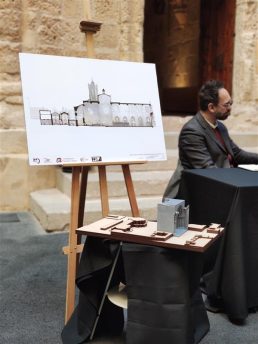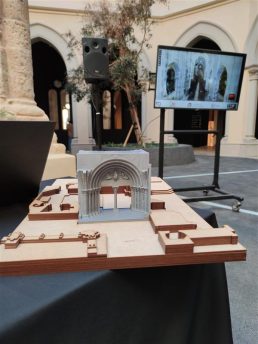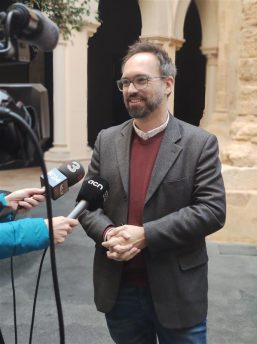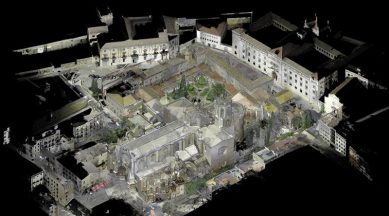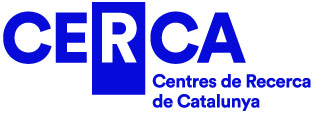
The methods and techniques used in the work have been revealed, as have the possibilities offered by digital documentation of the temple, such as musealization, virtual reality and 3D printing.
This Wednesday, November 27, the results of the architectural digitalization project of the Cathedral of Tarragona heritage complex were presented, allowing the graphic documentation of the chapels, the cloister, and the rest of the temple’s rooms. Three experts, Andreu Muñoz Melgar, Josep Maria Puche Fontanilles, and Agustí Costa Jover, have presented the results, methods, and techniques used in this pioneering initiative, as well as the possibilities it offers for the conservation, research, and dissemination of this unique heritage. Applications such as musealization, virtual reality, or 3D printing are just some of the opportunities that this technology opens up.
Project results are key to the documentation, conservation, and research of one of the most emblematic monuments of Tarragona, witness to 2,000 years of history.
The project is part of the four-year research programme in archaeology and palaeontology (2022-2025) of the Department of Culture of the Generalitat de Catalunya, entitled “Excavacions en el conjunt monumental de la Catedral de Tarragona (III Fase)” (CLT009/22/00102), directed by the Institut Català d’Arqueologia Clàssica (with leading researcher Josep Maria Macias) and the Museu Diocesà de Tarragona (MDT), with the collaboration of the Escola Tècnica Superior d’Arquitectura de la Universitat Rovira i Virgili (ETSA-URV) and the support of the Tarragona City Council and Repsol.

The delegate for Culture of the Archbishopric of Tarragona and co-director of the excavation project in the monumental complex of the Tarragona Cathedral (Phase III), Andreu Muñoz Melgar, has contextualised the project within the institutional and historical framework and has highlighted the support of the different institutions and the importance of preserving this heritage for future generations.
The ICAC specialist technician responsible for the graphic documentation of the project, Josep M. Puche Fontanilles, has explained the challenges of the digitalisation process, considering that graphically documenting a space like this always represents a challenge due to its size and its historical and artistic wealth. Tarragona Cathedral is particularly complex because it combines elements from very diverse periods: from the Temple of Augustus to vestiges of the early Christian cathedral and Romanesque, Gothic, Renaissance, and Baroque constructions. He also highlighted the transversality of the project, which has combined advanced technologies with the collaboration of academic institutions, private companies, and public bodies.
The professor of the Higher Technical School of Architecture of the Rovira i Virgili University, Agustí Costa Jover, has detailed the scanning campaign carried out in May 2024, which has made it possible to create a point cloud that reproduces the entire cathedral complex with great precision. This digital document, which combines billions of topographic data, is essential for conservation and opens up new avenues for research and dissemination, including applications in virtual reality and 3D printing.
A unique monumental ensemble
The Tarragona Cathedral is a monumental complex that combines architectural vestiges from 2,000 years of history. From the sacred Roman precinct dedicated to Emperor Augustus to one of the largest Romanesque cathedrals in Christendom, this monumental building presents a unique architectural and symbolic wealth. In addition, it preserves vestiges of the early Christian cathedral and elements of great Renaissance and Baroque value.
The complexity of its study has required a multidisciplinary approach, integrating archaeologists, architects, and engineers, who have been working collaboratively since 2004. This digitalisation project allows us to understand the complex’s complexity better and make its historical evolution visible. It offers tools so that the public and the scientific community can explore this heritage with unprecedented depth.
A transversal and multidisciplinary project
The project, which is part of the four-year research programmes in archaeology and palaeontology of the Department of Culture of the Generalitat de Catalunya (2022-2025), has required the collaboration of various institutions and specialised teams. It is led by the Institut Català d’Arqueologia Clàssica (ICAC) and the Museu Diocesà de Tarragona (MDT), with the support of the Higher Technical School of Architecture of the Universitat Rovira i Virgili (ETSA-URV), which has carried out the scanning campaigns with cutting-edge technology such as terrestrial laser scanners. This work has also included the participation of researchers from the University of Seville through the European project Smart Build Heritage.
The digital documentation generated, based on a point cloud that reproduces the architectural complex with up-to-millimetre precision, constitutes a fundamental basis for the conservation of this heritage while offering great potential for new lines of research and innovation in cultural dissemination.
Results with impact
Various media outlets have been interested in the results of the project. Tv3 has highlighted the applications that the digitalisation of the monumental complex of the Tarragona Cathedral allows, from the identification of possible construction problems that could damage the heritage to the creation of 3D reproductions that favour the dissemination and education about the artistic, historical and cultural value of the monument.
On the other hand, El Periódico de Catalunya points out the digitalisation of the temple, a project started in 2004, “has carried out surveys from almost 800 different positions, which has allowed researchers to obtain a cloud of 17 billion points” that make up the cathedral complex. Experts estimate the percentage of observation at close to 100% with a precision of 4 millimetres.
Likewise, La Vanguardia includes the statements of Josep Maria Puche (ICAC), who “has highlighted the challenge that the digitalisation process has represented, since it is the “largest” cathedral in Catalonia, with 14,000 square metres built.”
The Tarragona Cathedral is the direct heir of a tradition of more than 2,000 years of existence. “Where the cathedral is today, there was the temple of Augustus, which symbolised imperial power in the city and the territory; the imposing Roman remains conditioned the medieval construction,” explains Josep M. Puche (ICAC).
You can read more press news at:
«En marcha el proyecto que permitiría reconstruir la Catedral de Tarragona si ésta se derrumbara», Diari de Tarragona, November 27, 2024.
«Digitalitzen el conjunt patrimonial de 2.000 anys d’història de la Catedral de Tarragona», InfoCamp de Tarragona, November 27, 2024.
«Acaben la digitalització de la Catedral, clau per la conservació i reconstrucció en cas d’incidents», Diari Més, November 27, 2024.
«L’ICAC i el MDT digitalitzen el conjunt patrimonial de la catedral de Tarragona», MetaData. El digital de tecnologia en català, November 27, 2024.
«Vídeo: Així queda digitalitzat el conjunt patrimonial de la catedral de Tarragona», Diari Tots21, November 27, 2024.
«La digitalització del conjunt de la catedral obre la porta a infinitat de possibilitats», Tac12, November 27, 2024.
«La Catedral de Tarragona es podrà visitar en 3D gràcies a la digitalització de tot el seu recinte», Tarragona Digital, November 27, 2024.
«Digitalitzen el conjunt patrimonial de 2.000 anys d’història de la Catedral de Tarragona», Reus Digital, November 27, 2024.
«Digitalitzen el conjunt patrimonial de 2.000 anys d’història de la Catedral de Tarragona», La República, November 27, 2024.
«La digitalització del conjunt patrimonial de la catedral de Tarragona posa al descobert el testimoni de 2.000 anys d’història», Diari Digital de la URV, November 27, 2024.
About the Catalan Institute of Classical Archaeology (ICAC)
The Catalan Institute of Classical Archaeology (ICAC-CERCA) is a CERCA center established as a consortium in 2003 by the Government of Catalonia and the Rovira i Virgili University. It is a Catalan institution with an international scope, at the forefront of research and conservation of archaeological heritage. Its headquarters are in Tarragona, a city recognized as a UNESCO World Heritage Site in 2000. Its researchers work to understand the past, through the study of archaeological remains, and promote the preservation of the historical legacy. We are CERCA!
For more information, visit www.icac.cat.

